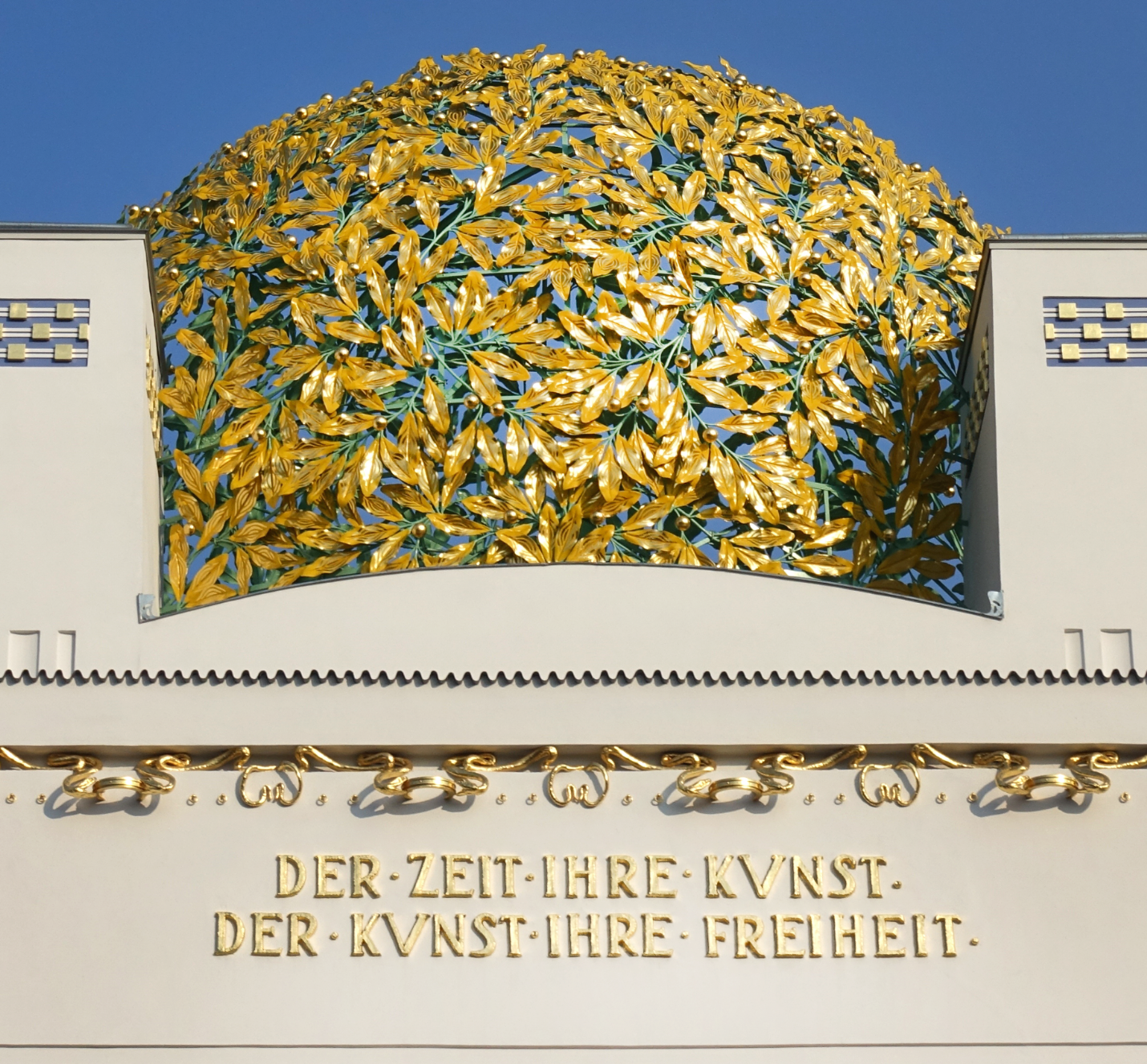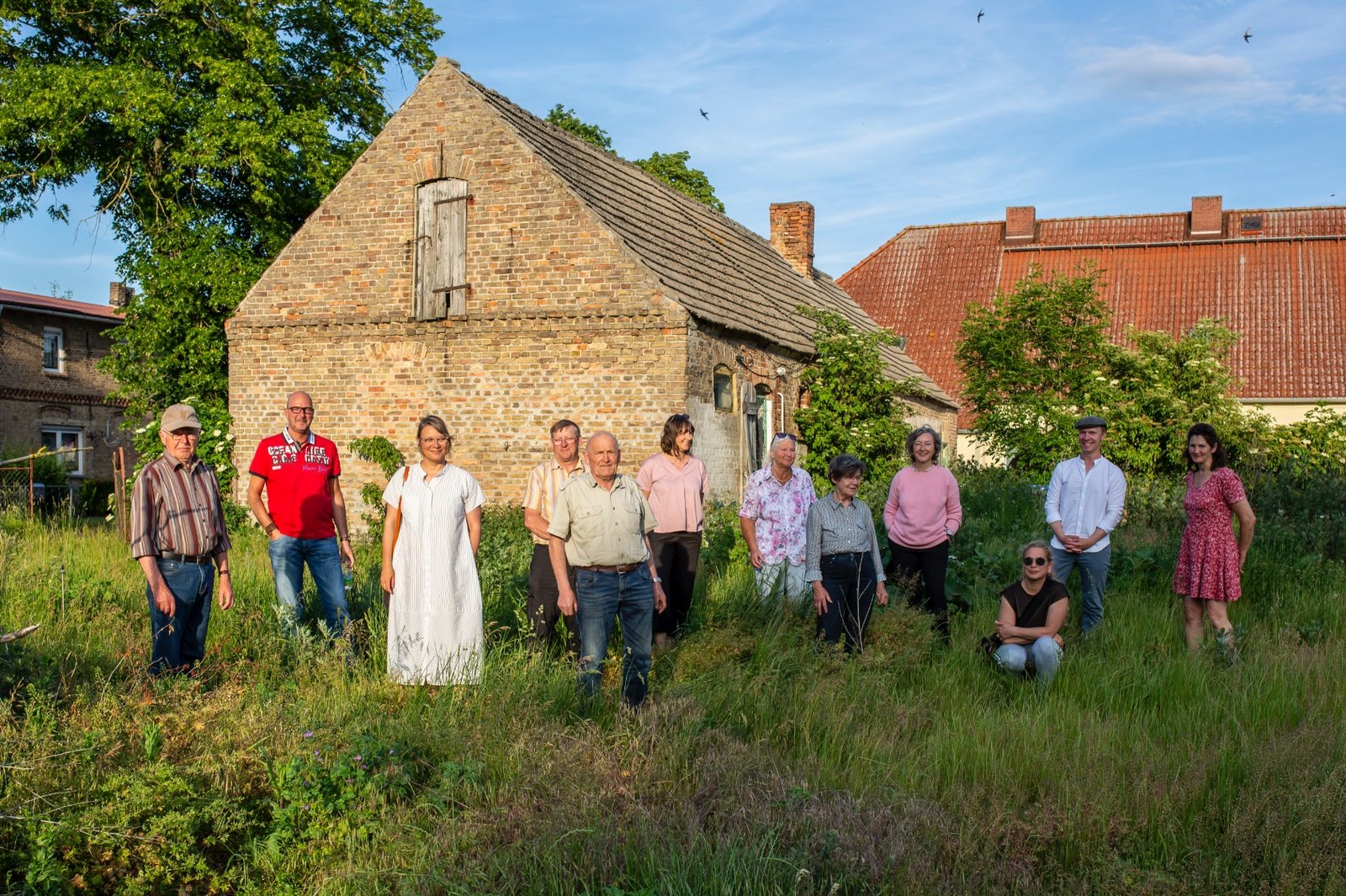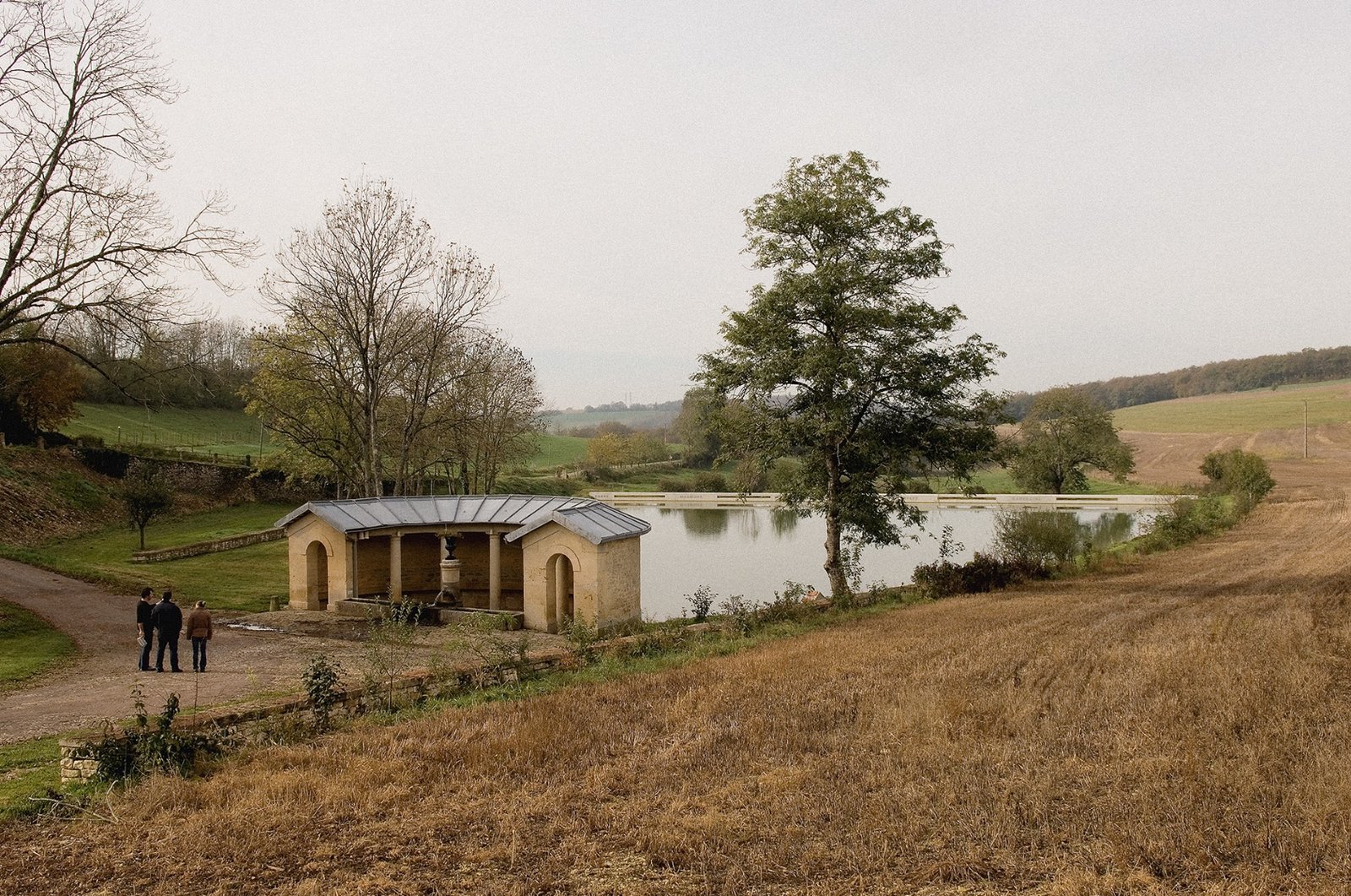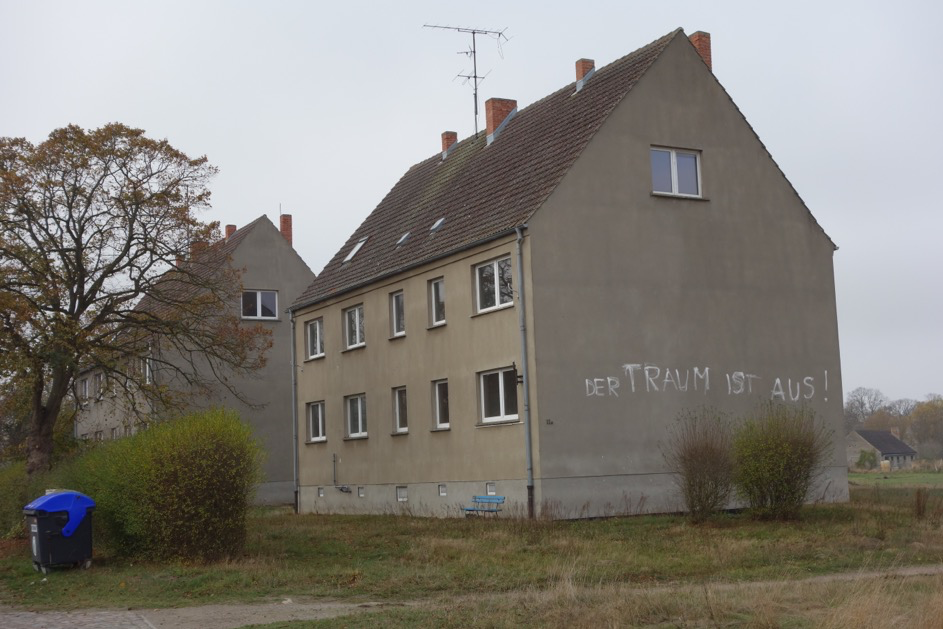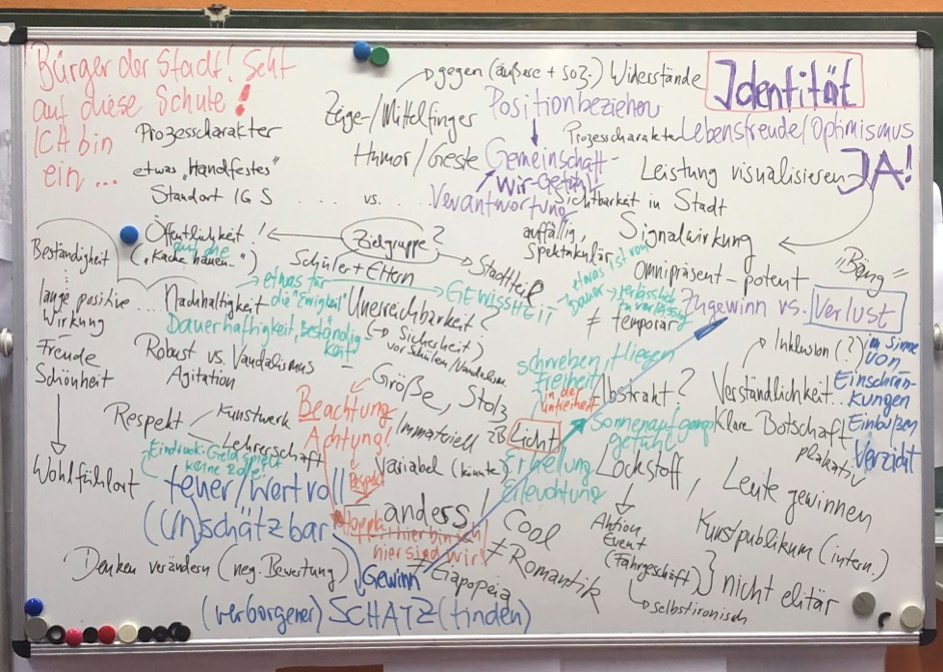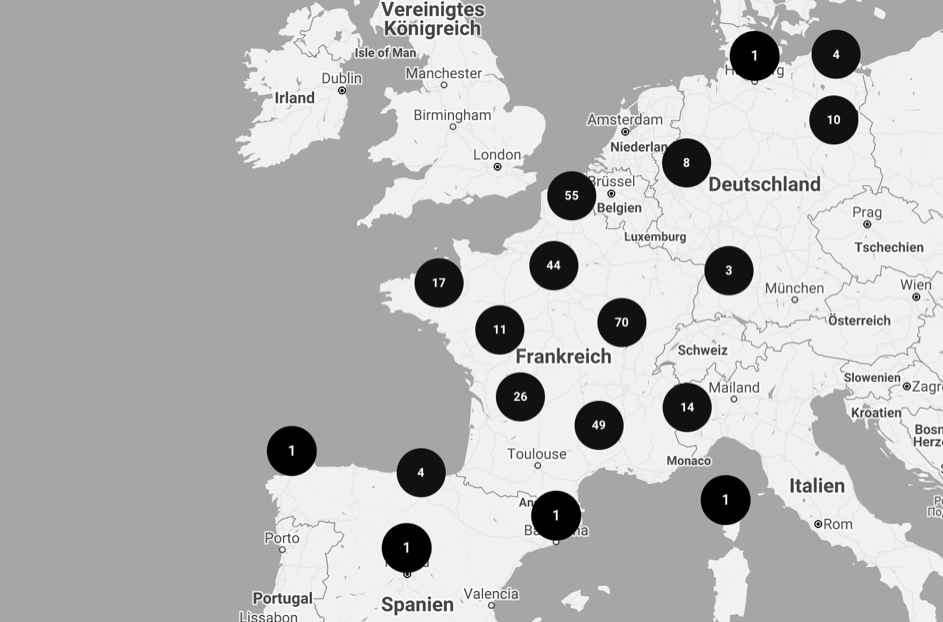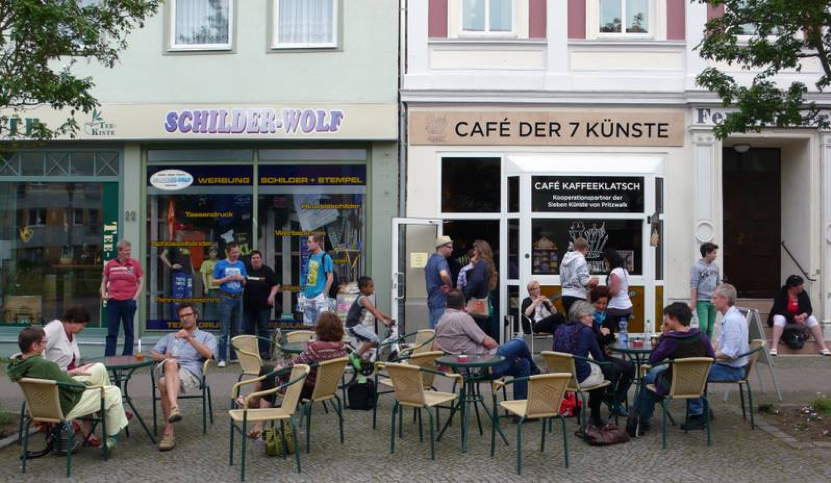Temporality, reciprocity and connectivity in the actor worlds of the New Patrons
Judith Laister
This text by the cultural anthropologist Judith Laister is a cultural analysis of the participant world of the New Patrons. It examines the various protagonists that come together in the projects, how cohesion is established between them and where controversy, rifts and disruptions arise.
As a central ‘moment of translation’ (impulse that effects cohesion among the complex protagonist constellations) this text discusses – along with capital, ambience, we-assurance, images, words and connective activities – various facets of the factor of time.
For her study, Judith Laister conducted interviews with participants in the New Patrons programme, examined protocols and analysed the course of current projects. Judith Laister (*1972) researches and teaches at the Institute of Cultural Anthropology at the University of Graz. She studied European ethnology, art history and art education, and is interested in the connections between these fields in theory and practice. She regularly enters into ‘aesthetic alliances’ in order to research into the artistic field with its protagonists.
‘To the time its art. To art its freedom.’ 1 The motto of the Vienna Secession, formulated by Ludwig Hevesi in the late nineteenth century and mounted in conspicuous golden letters on the exhibition building constructed on Wienzeile in 1897, is still a principle of contemporary artistic creation. The dictate of the moment was not adherence to tradition and dependence on predominantly state, feudal or church patrons, but autonomy, transformation and dynamics.
Pierre Bourdieu’s aesthetic theory of modernism, which has primarily framed the artistic realm since the late eighteenth century as an arena of social struggles for emancipation and distinction, exposes the call for freedom and temporality as an expression of the ‘double-entry accounting’ (Bourdieu 1986, 241–258) of bourgeois capitalist society. According to this theory, art should have no truck with feudal, ecclesiastical or governmental commissions, and operate entirely free from economic and political dependency as a locus of the formation of civil subjectivation and identity. If art is required from its time and freedom from art – in the sense of a social sphere of ‘noneconomic, and therefore disinterested’ forms of exchange (Bourdieu 1986) – this also raises the question, against this theoretical and socio-historical background and from the perspective of an aesthetic anthropology, of which art and which freedom. And above all of art and freedom for whom – and to what end?
In its title, To Art its Time …, this text deliberately reflects the motto of the Vienna Secession and its aesthetic and social implications, inverts it and confronts it – 120 years later – with a contemporary artistic initiative: the Nouveaux commanditaires, Neue Auftraggeber or New Patrons (NP). 2 ‘What’s your commission?’ Every NP project begins with a simple question that generates a wide and diverse range of discourse and practice, human and non-human actors, political attitudes and aesthetic positions. The questions is addressed to all those wishing to intervene in their everyday surroundings and circumstances by commissioning a work of art. ‘New Patrons are people who want to make positive change. They commission artists to develop projects that respond to urgent questions in their city, town, or village.’ 3 Commissions can be intended for differing or interlinked areas: design, architecture, urban planning and landscape gardening, as well as photography, film, painting, sculpture, installation, performance and action art, or music, theatre, literature and Internet art.
The division of the classical genres into applied, visual, performing and literary arts is revised along with the conventional association of patrons with privileged social spaces. Art should no longer be commissioned by capitalist agents of the social elite, dominant institutions, government or the church. Instead – such is the idea – every citizen may ask him- or herself: ‘What is important to me? What should I change outside my front door? Where are my wishes not being heard? What’s missing in our environment? What are we closing our eyes to? And how can we come together as a community?’ Nurses, homeless people, students, adolescents, unemployed people, villagers or city dwellers, enter into a cooperative creative process around this urgency, usually with established artists, for ‘who would know better than you do what matters to your community?’ 4
Along with the patron groups (PG) and artists, the so-called mediators play a key role in the first circle 5 of an NP project. As participants in an NP network their role primarily consists in accompanying active citizens on the way from an outline idea to the realisation of a specific work. The essential steps in the process, which can last several years, are the identification of a significant theme, the clear formulation of a commission, the selection of media and artists, the acquisition of funding, the obtainment of permissions, the realisation of the work and its public legitimation as socially relevant common property. In this process the first circle gradually interlinks with a second one. The idea is that ‘the fruits of these collaborative efforts are non-commercial, public, and non-profit cultural assets’ 6 – from comics or stories to a website or film to sculptures in public space or urban and landscape design.
The configuration of the commission is always vitally interdependent with the constitution of social relations between the widely varying actors in an NP project. This complex and time-consuming work of communication and relationship-building, or – as is proposed below in reference to Michel Callon – of translation, is accompanied and structured for the most part by the NP mediators. They function as intermediaries and interpreters between the various actor groups, with their diverse socio-spatial positions and shares of economic, social and cultural or moral capital. The main capital deployed and exchanged here is that which Alexa Färber (2014) analyses with an eye to the motivation of civic engagement in Berlin tenant initiatives, considering its potential for multiple coding, namely time. This factor is given particular attention here against the background of the central questions of the connective or divisive stimuli (‘moments of translation’) in the NP actor worlds. 7
Michel Callon: Theory of Moments of Translation
The concept of translation (la traduction), which in this text is a central figure of thought in the analysis of actor constellations in NP projects, is used by the French social scientist Michel Callon (1980; Latour 2005/2010) to describe the production of connectivity between the heterogeneous parts of a constellation of actors. Callon looks at academic researchers to examine ‘creating convergences and homologies by relating things that were previously different’ (Callon 1980, 211), and in doing so distinguishes between four overlapping ‘moments’ of translation:
(1) Problematisation: the researchers make themselves indispensable by identifying uncertain knowledge through raising issues and convincing other actors of the necessity of scientific research and the joint solving of a problem.
(2) Interessement: the researchers define roles corresponding to the problematisation for or with their allies (the ‘system of alliances, or associations, between entities’) (Callon, 1986, 206), and consolidate these positions by generating interest in their objectives.
(3) Enrolment: the researchers coordinate the relationships between the adopted roles; successful enrolment ensures that the participants accept their roles, believe in them and thus support the initiated alliance.
(4) Mobilisation/activation: the various actors get going properly and actively support the researchers in their objectives.
By the end of the four moments of the translation process the actors are linked in a ‘network of relationships’, although ‘this consensus and the alliances which it implies can be contested at any moment’ (Callon 1986, 203, 218) and only stabilised again thought time-intensive interaction. ‘To translate is to displace’ (Callon 1986, 223) physical-spatial or metaphorical meaning. This displacement may be triggered by internal or external resistance, introduced strategically, or it can occur unintentionally.
Looking at NP projects through Callon’s theoretical lens of the four moments of translation (problematisation, interessement, enrolment, mobilisation/activation) is compatibly productive for an analysis of the highly complex NP actor constellations. The basic premise for bringing about cohesion, and therefore the initial moment of translation, is the identification of, or with, a significant connective theme or field of action. This is named on the metalevel of NP organisation and protocol as the wish for a collective intervention into a given social and spatial environment, open to all social actors – not only to the privileged. ‘All people, without exception, in every part of civil society’ who take on social responsibility ‘jointly and equally’ are regarded as patrons.
The work of art – itself now an actor of public life – is no longer a mere symbol of artistic individuality, but an expression of the will of autonomous persons to form a community by lending collective significance to contemporary creativity. (Hers 1990)
For a successful, that is, connective realisation – on the micro-level of the individual projects – of the problematisation recorded in the protocol, identification is required first of all: an active and creative support for and creative development of a problem by committed citizens. Their interest in a collaborative work for their respective local setting should be supported or stimulated (interessement). Speaking about art in this early phase can be crucially productive, provided that a work of art can be seen as desirable, its co-determination as a gain or its effect as valuable. (Mediator: ‘If nothing else helps, then perhaps art.’) But it can play an ambivalent role if art is framed as an elite sphere in the cultural and social conditioning of the PG, therefore offering (as yet) little possibility for identification.
A ‘degree of suffering’ (mediator) – of pain, anger or dissatisfaction – experienced by individual citizens or groups in relation to the prevailing conditions of their environment proves to be the guiding impulse that awakens interest in a shared issue and brings about group cohesion in consequence. A social dynamic of alliance formation tends to develop where the desire for change is great, rather than where there is saturation and satisfaction. Examples of such connective impulses are concerns about the negative, false or lacking image of a district; a wish to counter the imminent disintegration of a building or locality, or to fill empty shops with new activities; highlighting a town centre; revealing the specific characteristic of an area; acknowledging peoples’ achievement; examining the identity of a region; creating meeting places.
Identifying a specific interest – sounding out the wishes and needs of a collective – is therefore the beginning of an NP project. What are the instruments available? What shared values can be ascertained? And if they diverge, how can they bring together a joint initiative nevertheless? Central to this phase of the project is not only the interest of the first circle, with a focus on the PG for the further translation process, but also the influence of actors from the second circle, such as citizens and initiatives outside the PG who perhaps represent other interests.
Aside from the moments of translation instanced by Michel Callon as problematisation and interessement, every actor world, with its characteristically different protagonists, needs a clear allocation and assumption of roles and a substantial mobilisation/activation. Enrolment also has a central significance in the NP protocol, and the mediators occupy an intermediary and communicative position in and between a project’s different circles.
The protocol of the New Patrons describes the roles of varied actors and their respective responsibilities in a joint process with the aim of the creation of artworks of any kind. (…) The protocol advises the mediators, whose task is to connect artworks and public, also to connect people: to create links between the artist, the patron and all other actors. The mediators organise the collaboration. (Hers 1990)
The ‘varied actors’ whose collaboration the mediators organise, comprise both human and non-human actors. The protocol specifically names the ‘patrons’ (‘people in every part of civil society’), ‘artists’, ‘elected officials’, ‘managers of private and public institutions’ and ‘researchers from various disciplines’. The artwork too is firmly described as an ‘actor of public life’ (see above) which is ‘financed by private and public subsidy’ to become ‘common property’. ‘Its value is no longer that of the market, but lies in the use to which it is put by the community and the symbolic relevance it is accorded.’ (Hers 1990)
The enrolment noted in the NP protocol forms the basis for the mobilisation and activation of the actors in the sense of an ‘initiative democracy (…), so that the artwork can find its way into the community’. As in Callon’s example of actor networks in the area of social research, the success of NP projects is also established in the relationship between mobilisation and cohesion, that is, in the degree to which all participants become active, support an objective (in the case of the NP, a commission) and cooperate. Callon’s observation that in the course of the translation process which forms the actors into a network of relationships, consensus generated can be challenged or endangered, but also stabilised again through negotiation, is also a integral feature of the NP protocol and its guidelines. The ultimate aim, in its pragmatic estimation, is to deal with a varied field of interests productively, more specifically to moderate it through the figure of the mediator.
In agreeing to take joint and equal responsibility, all actors also agree to resolve the tensions and conflicts that necessarily arise in the public life of a democratic society through mutual negotiation. (Hers 1990)
In the anticipated phases of controversy, which can occur at any time, the mediators have a central function – as intermediaries or, to refer to Callon, as translators. Their task is not only to encourage committed citizens in their objectives and seek out local contacts but also to take divisive actors into consideration and to appraise the role of the artists in the context of the overall project. Because the realisation of a commission is not envisaged as the ‘ego trip’ (mediator) of an artist, but nevertheless in recognition of and with the strategic use of the predominant rules of the art world (profile, market value, quality, claim to autonomy, etc.), it is necessary to seek out compatible actors for the artistic process in the given context. This represents a challenge, at least for NP projects located in regions remote from the art capitals, as the art world is still characterised by mechanisms of socio-spatial discrimination and by unequal economies of attention between province and centre, local initiatives and globally operating stars.
The degree of connectivity in the phases of enrolment and mobilisation – in the sense of a strong formation of committed citizens into a group of New Patrons – is also linked to the actors’ conventions of action. The participants’ respective social self-image has been found to be a cohesive or divisive influence particularly in these early stages of a project. Where an initiative is already self-evident, with people seeing themselves as empowered to act and familiar with the NP model, or for whom it at least appears coherent (commissioning an art work as a social and spatial intervention developed in dialogue with the artist), enrolment/mobilising takes place differently from its occurrence with actors who have less of an idea of self-initiated problematisation and commissioning.
At the same time these self-images can – and should – change in the course of a project. Actors with an unclear sense of their roles may develop clear ideas of their field of action in an NP project – or those with an initially clearly defined position may leave the group due to failed expectations of themselves or their role in the project. Against this background the entire translation process, which is based on permanent change, as Callon’s definition suggests, can be identified as the basic aesthetic idea of the NP. Art no longer implies a self-contained end product in the modernist sense, but encompasses all the processes of social formation that take place in the course of the work’s realisation – and also, above all, that occur after its physical completion. Even failure is a possible and legitimate feature of every NP project. In the wider context of the NP network – and with reference to prominent examples – it need not necessarily count as a defeat, but can be framed as something to be learned from. How actors ‘get hooked’ (mediator), how they can be inspired and convinced and their curiosity aroused, how they become willing to take on responsibility for a project, is the focus of the next section.
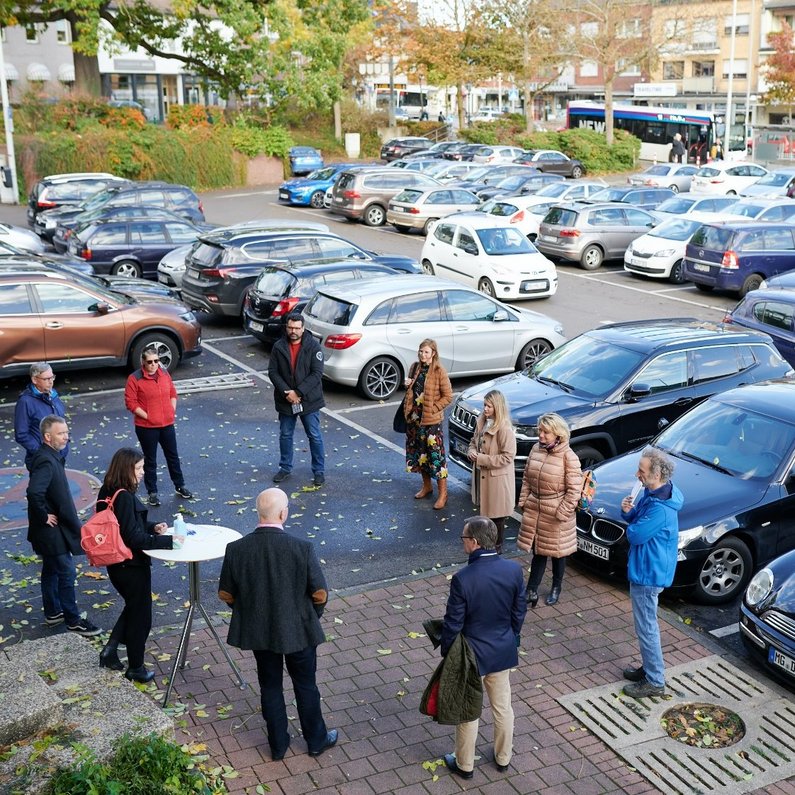
The New Patrons of Wickrath
Signing the commission. Project within the pilot phase of the New Patrons in Germany. Project start: 2020. Mediation: Kathrin Jentjens Photo: Florian Wagner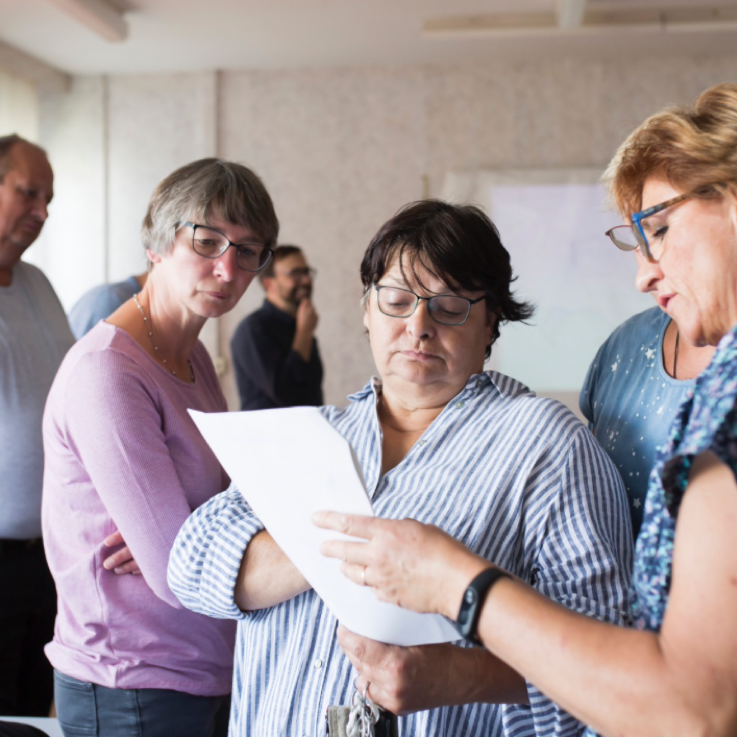
The New Patrons of Züsedom
The commissioning group discusses initial ideas. Project within the pilot phase of the New Patrons in Germany. Commissioned artist: Jakub Szczęsny. Project start: 2020. Mediation: Holger Friese. Photo: Victoria TomaschkoWhile Michel Callon’s theory of moments of translation is devoted to four overlapping stages (identification of a problem, creation of interest, allocation/assumption of roles, ongoing mobilisation (activation), this text examines the concrete implementation of these impulses in order to create cohesion between the varied parts of an NP actor world. What gets the actors hooked? What arouses their curiosity, motivates them to take part and remain active?
The ‘we’ of the translation can be divided into six significant categories, which can be either cohesive or divisive: (1) the capital (considered along with Pierre Bourdieu as economic, social and cultural/moral capital) available to actors in an NP project, or that which they can acquire; (2) the effective ambience – existing or deliberately created; (3) the assurance of a ‘we’ in the sense of an imagined community holding out the prospect of equal participation, shared decision-taking and recognition; (4) image acts (Bildakte, Bredekamp 2010/2015 ), which direct communication and promote connection through visual artefacts; (5) speech acts, which bring about cohesion through spoken and written words; and (6) group-building activities such as communal meals, games or walks. A seventh, transversal element of translation inherent in all the others is the factor of time, which is mentioned throughout and finally considered separately.
Capital – economic, social, cultural, moral: ‘not just to earn money’
A research assessment of various NP projects confirms what studies of other relationally oriented – that is, with the aim of fostering connection between different actor groups (Bourriaud 1998/2002) – artistic process have found (Laister 2020): capital, conceived with Bourdieu (1986) as economic, social and cultural or moral capital, influences the degree of cohesion between the various actors.
Economic capital plays a crucial role – albeit one involving ‘obfuscation or, more precisely, euphemization’ (Bourdieu 1986) – in accordance with the double-entry accounting of bourgeois capitalist society and its dominant idea of art as a realm of altruistic, non-economic relationships. The fundamental requirement for the realisation of an NP project is the voluntary commitment of active citizens, whose reward is the artwork commissioned by them in its designation as socially relevant common property. NP mediators and artists are paid for their work, which is motivated by ‘more than economic interest’ (mediator). This ‘more than’ – such as ‘enthusiasm, sense of responsibility, curiosity’ or ‘the beauty of the social purpose’ (mediator) – can lead to a ‘surplus commitment’ (mediator) because of the complexity and unpredictability of the processes. In keeping with the logic of artistic endeavour and the unclear division between paid and unpaid labour, there is a potential conflict here which must be kept in mind and balanced out at all times by the NP organisation and mediators.
Economic capital also becomes decisive once the dimensions of the commission become an issue. Real costs should be firmly considered by the first circle as soon as a draft is requested or received, a cost and budget projection prepared and the acquisition of funding initiated. In this project phase funding assurances are pivotal elements of translation that not only strengthen the cohesion of the inner circle of actors but also the connections between the first and second circles, and they have a stabilising effect on the project as a whole. At the same time economic discussions confront the NP mediators with challenges that particularly put the project’s cohesion to the test if the PG’s economically founded expectations are disappointed – for example through diminished funding availability, rejected budgets and necessary rescaling of original ideas.
Once again it is the factor of time that is able, as a basic project resource (for making further funding applications, awaiting political decisions, calming emotional sensitivities, etc.), to raise or lower the level of translation in an NP project.
Apart from the availability of economic capital – and partially interdependent with it – that of social capital is another significant moment of translation. Personal acquaintanceship, relationship or friendship with people from privileged sections of society or from areas useful to the project function as door-openers for the acquisition of economic capital – and thus stimulate connectivity. But they also strengthen the network of relationships within the core group of active citizens, mediators and artists. Particularly important for the strengthening or expansion of the network of actors are already existing links to local experts, whether administrative (key figures in regional public administration), technical (proprietors of businesses or staff of companies with the needed technical know-how) or informational (experts in a project-relevant field).
Social capital doesn’t only make its connective effect through existing relationships; it also operates through the possibility of acquiring such capital by participating in an NP project. The prospect of making the acquaintance of internationally active artists, local politicians or other interested or socio-spatially prominent persons is a motivation for participation and continuation.
Stabilisation is additionally achieved by the dominant NP narrative of linking people throughout Europe and the world in a wide-ranging social network – or, as one mediator put it, a ‘family of the convinced’. These connective images of strong international social capital are conveyed where websites show maps of project locations, for example, or where extensive lists of projects with their respective actors visualise this imagined community. 8
The construction of an ‘imagined community’ (Benedict Anderson) is rhetorically strengthened by the different levels of meaning in the expression ‘New Patrons’, which conceptually unites the global social network, the local organisations and the regionally situated groups of active citizens.
Building up and maintaining all these differently dimensioned social relationships – on both the microlevel of the NP projects and the macrolevel of the global network – and establishing stable bonds of trust (from the early integration, where possible, of relevant multiplicators and politicians interested in civic participation, to regular email correspondence about the current situation, to being on familiar terms with the artists) needs time – along with the relevant cultural capital. Due to the participants’ social heterogeneity, this capital is unequally distributed and valued. It is expressed in the sometimes conflicting coexistence of differently weighted cultural assumptions 9 and knowledge 10 which need to be translated through targeted and productive moderation and mediation.
The various facets of cultural capital can mainly be seen, however, in learned attitudes such as patience, equanimity, stamina, empathy, self-esteem or resilience, and in the various forms of moral capital in values such as community, solidarity or neighbourhood. The cultural or moral capital value circulating in NP projects creates a tension that continually questions the perceived universality of one’s own ideas, and brings misunderstanding and conflict in its train. The socio-spatially conditioned and thus diverging distribution and value of cultural and moral literacy may interfere with effective translation in as much as participants with more legitimated cultural capital tend to claim the right of interpretation, and social hierarchies become apparent despite imagined equality.
As already emphasised, a transversal form of capital that can be identified throughout the projects and forms of capital as crucial to the production and reproduction of connectivity, and thus as a significant moment of translation, is time. Time is not only the necessary prerequisite for voluntary activity; it can also be variously brought to book when its investment can be coded beyond its economic values as meaningful socio-political contribution, for example, or as individual (moral, social, cultural) profit or strategic gain for the project (Färber 2014). The time contributed to a project can yield non-monetary returns such as friendship or interesting contacts with special people 11 or those relevant to the further course of the project. 12 But invested time also obtains adequate non-monetary reciprocity, and is thus effective as a moment of translation, where its application can be coded as moral gain, as recognition from others for oneself and one’s actions, as the possibility of creative development, as socio-political contribution or aesthetic intervention into the immediate environment. So the key question for the section on the element of capital is that of what the respective participants receive beyond remuneration for their investment of time.
Ambience and we-assurance: ‘where art isn’t expected’
The investment of time capital in helping to influence the everyday – urban or rural – spatial environment is the basis for the realisation and success of NP projects. Space, along with time, is a significant element of translation, as reflected in the naming of NP projects after their spatial sphere of activity (The New Patrons of Aisne, Die Neuen Auftraggeber von Greifswald, etc.) and the involvement with concrete places and their atmospheres. The settings are usually located beyond the busy urban centres, in small villages, unremarkable small towns, marginalised city zones or at the boundary of centre and periphery – often ‘where art isn’t expected’, ‘where infrastructures are disappearing’, ‘identities are crumbling’ and ‘restructuring challenges’ (mediator) dominate.
Numerous NP projects are devoted to such spaces, with a will to examine, reveal, highlight or protect an area’s special features, design and atmosphere, or to criticise and change them. The desire to shape the environment – for example though architectural or sculptural intervention, the revitalisation of abandoned property, the renovation of historic buildings or the highlighting of neuralgic zones – is simultaneously articulated as the intention to shape and revive local social relationships. A connecting impulse can be the desire to create a ‘centre’, ‘something that gives us meaning’, so as to give an area faced with social isolation and outflux of population the prospect of regained cohesion through the establishment of zones of communication.
The particular importance of ambience as an element of translation is underlined in the course of a project by the use of words and verbal representation that take up or evoke particular spatial situations. 13 And in images and visual representations the emphasis on close relationships between spaces and people is captured in a repeated motif: a group of participants in front of atmospherically staged historical buildings, in romantic landscapes or other striking settings that transport the idea of togetherness and community through a spatial aesthetic. Ambience is an especially effective element of translation where it can be linked to various forms of an egalitarian, democratic we-assurance – with the promise of participation and belonging, of having a voice that can be raised and heard, of appreciation and recognition.
These locally specific, multiple and multifarious we-assurances have a high connective potential, but at the same time and in their special way they can breed ambivalences and conflicts of translation. The we-assurance articulated in many ways by NP projects creates expectations that can become explosive if repeatedly disappointed. Given the ambivalence of we-assurance, expectations and disappointments are often projected onto the NP mediators. As translators they are met with the challenge of juggling between different demands, and between demand and reality. This means bearing in mind divergences, differences of opinion, conflicts, discussions and controversies as integral parts of the communication process – in keeping with the NP protocol (see above). One translation tool here is the socially integrating effect of festive gatherings and other ritual practices, through which potent existing customs can be identified and activated or recreated (e.g. bidding farewell to a familiar building).
We-assurance can also be strengthened by local contacts and confidantes who don’t polarise or criticise but have an integrative, balancing and supportive effect. They function as the mediators’ first local points of reference with the role – together with the mediator – of personified elements of translation. A connective practice here might be the repeated question of what holds the PG together as a group, what it accomplishes and what gives it weight and legitimacy. Such strategies of we-assurance are one way of stimulating the willingness of the group to take on responsibility of its own in the course of the project. Expectations on the NP mediator and artists can be successively minimised by repeated we-assurance and transformed through the development of local structures of (personal) responsibility.
An important stimulus here is the joint formulation of a commission. This is an important strategy in affirming social participation in shaping the lived environment. The written NP protocol, with its prevailing rhetoric of community, forms a permanent manifestation of the promise of an egalitarian ‘we’ confident in the effectiveness of its decisions.
Speech acts, image acts and everyday activity: ‘a shared language that everyone understands’
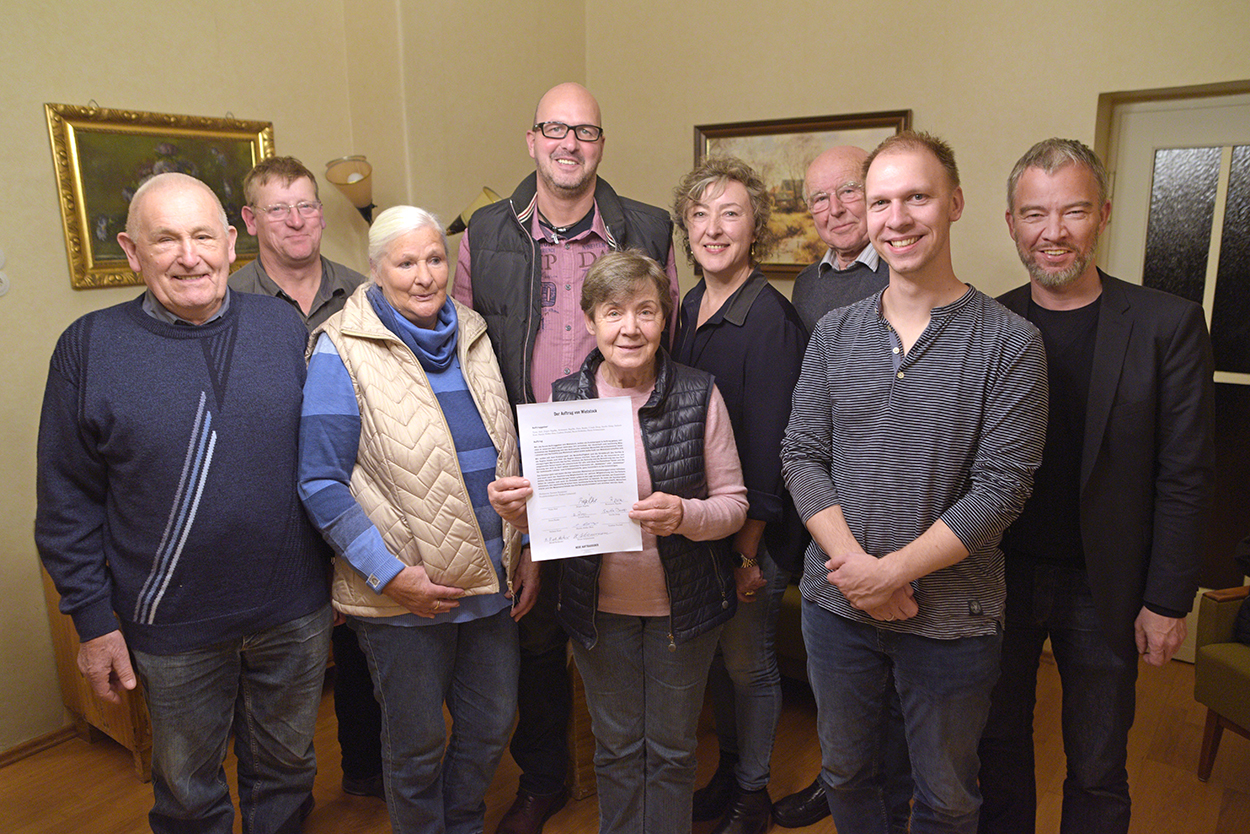
The New Patrons of Wietstock
With mediator Susanne Burmester (4th from right) and Head of Regional Development Gerrit Gohlke (right) after signing the commission. Project within the pilot phase of the New Patrons in Germany. Commissioned artist: Antje Majewski. Project start: 2019. Photo: Frank Hormann/nordlichtThe assurance of belonging and social participation established in the course of NP projects is variously expressed in oral, visual and practical everyday form. The already mentioned NP protocol functions as guideline and instructions here, in its concise translation rhetoric that holds out the prospect of community, equality, (personal) responsibility and activity. The connective language of the NP is also manifested in the targeted use of motivating slogans and key guiding concepts such as the development of vivid project titles and metaphoric turns of phrase that generate shared emotion. Linguistic and visual formulations and representations on websites, in catalogues or announcements of events take on a value-forming, connective function in the course of a project.
It is also necessary for the cohesion of differently socio-spatially positioned actor groups in an NP project to find a language aimed at mutual understanding and trust. NP mediators emphasise that it is crucial for the PG and its identification with a project to develop a ‘language of its own’ used to communicate both within the first circle and outwardly. If participants have little experience in articulating and asserting their wishes, or in publicly communicating their ideas and demands, the development of this shared language once again requires a particular resource: time.
The socially connective function of words can also be seen in the use of common practices of textualisation such as the taking of minutes or the drawing up of written contracts. But words and language, as central elements of translation, take effect at the heart of any NP project: the commission, formulated and signed by the PG and its mediator, the precondition for the involvement of the artists and the beginning of the realisation process.
On the visual level the strategic use of images and pictorial artefacts in their function as elements of translation inwardly and outwardly can be seen in photographic and film documentations of the project. Individual or group portraits of participants – above all of the PG and its NP mediator – are created during different phases of the project, often by professional photographers and staged as performances aimed at strengthening cohesion and group identity, with a view to public image and specific local reference.
Mappings, drawings, mind maps or diagrams, which reduce contextual complexity in their portrayal and therefore record needs or relationships simply, are effective visual elements of visual translation. They serve as pictorial and rhetorical instruments that can convey interim analyses, dictate structure and orientation, ascertain facts and promote understanding for a process. Existing images from projects previously carried out and reproductions of other well-known works of art, sculptures or buildings can also play a role in stimulating the imagination of a group.
Apart from this attendant production of photographs, images and graphics to stimulate cohesion, connective visuality plays a central role in the phase of the realisation of the commission by an artist. Although in the early stages of an NP project discussion is not so much about art or artists, or images and possible forms, the image of the commissioned work gradually increases in significance as an element of translation. Sketches illustrating the planned realisation of the formulated commission – whether comic, sculpture, striking architectural intervention, performative staging, rural-planning design, etc. – allow a joint view of the possible future course of a project, and can generate strong identification with it. If, in the words of a mediator, an artist ‘makes something that arouses their enthusiasm, then they’re more connected with the project and its concerns’.
Words an images, as a foray through various NP projects shows, take effect as elements of translation on many levels, including that of everyday digital communication via email and social media. But everyday non-digital, actual physical action – above and beyond atmospheric staging and tools of visual translation – also and essentially stimulates social cohesion. The project-specific order of the day includes communal walks through the project district, communal cooking and meals or other everyday activities that consolidate the links between the heterogeneous and widely ranging NP actor worlds.
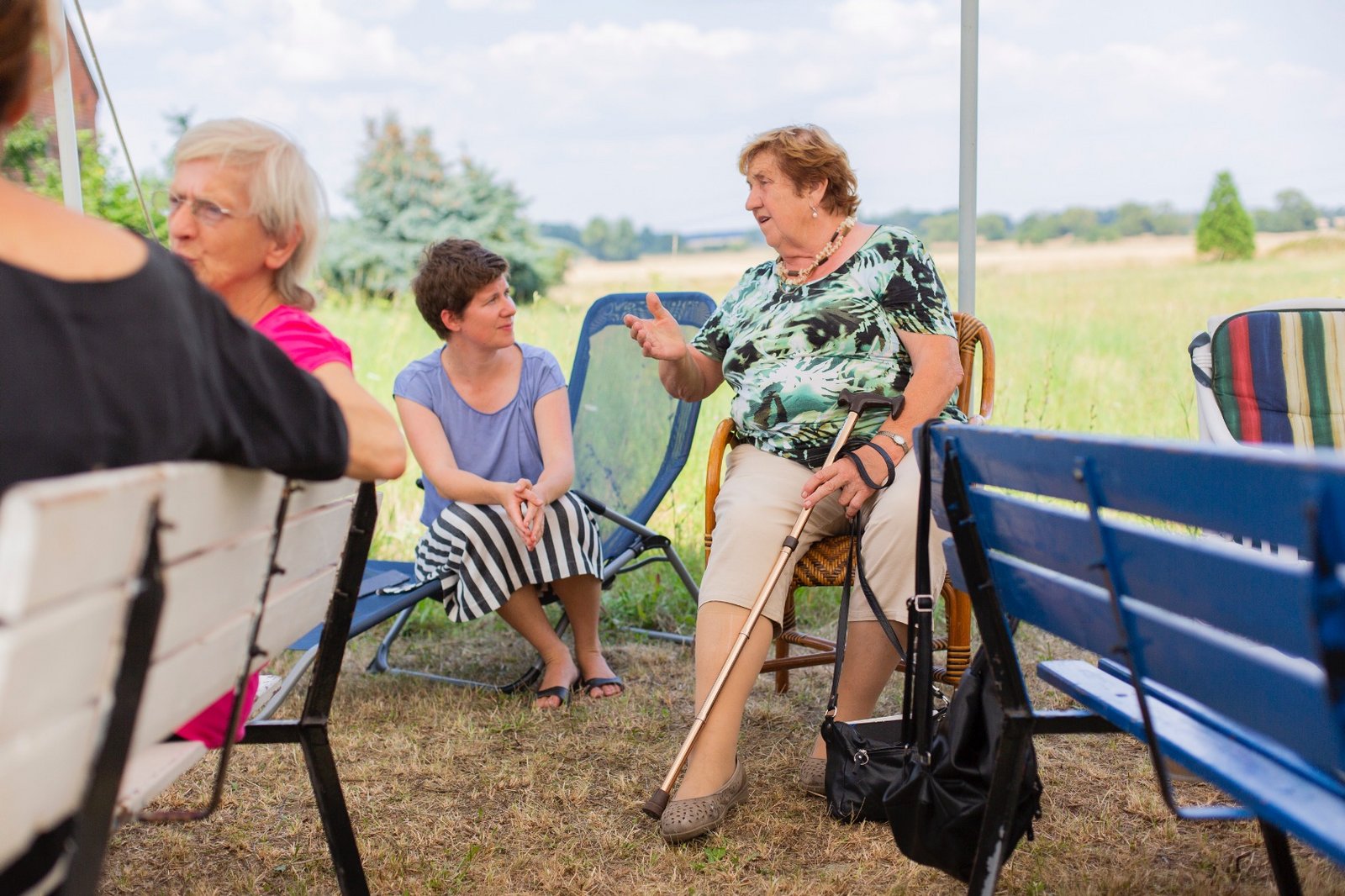
The New Patrons of Steinhöfel
Coordinator of regional development Sophia Trollmann with guest of the Dorfrezepte get-together of the New Patrons of Steinhöfel. Steinhöfel (Brandenburg) is a project within the pilot phase of the New Patrons in Germany. The group commissions an artistic project that aims to bring people from the twelve villages of the Steinhöfel municipality together for a dialogue about the scope for shaping their aging. Formulation of the commission: 2019. Mediator: Lena Ziese. Commissioned artist groups: ConstructLab and Rimini Protokoll. Photo: Victoria TomaschkoAnyone who eats and drinks, goes for walks, poses for group portraits, formulates commissions, writes emails, organises meetings or conducts negotiations in the course of a New Patrons project has to be able to take the time to do so. The resource of time and the possibility of earning recognition – whether material or symbolic – with it are unequally distributed. While some speak of ‘the luxury of time’ (mediator), which they are able to see as a rare, valuable, variably codable commodity, others have sufficient time but no possibility of charging it symbolically or of exchanging it for a secure livelihood. Time – apparently clearly ascertainable and progressing equally for all – often turns out to be an ambiguous resource requiring differentiated social definition, and its availability or lack may have both cohesive and divisive effects.
This ambivalent, both connective and divisive potential of time is reflected in concentrated form in the socially complex, time-intensive processes of the New Patrons. Translation – in the sense of the establishment of cohesion between the heterogeneous parts of the NP actor worlds – is primarily successful where the high share of voluntary time-investment can be brought to book as a gain in non-utilitarian values such as social belonging, a sense of being heard, recognition, community-building, making a fairer or more beautiful world, or as the acquisition of social, cultural and moral capital. Gaps and breaks in translation, on the other hand, arise where this compensation is not possible. In this sense the art of translation of the New Patrons can be summarised as follows: To art its time. To time its value.
(Translation: Michael Turnbull)
Literature
Bourriaud, Nicolas (1998/2002). Relational Aesthetics. Paris, Les presses du réel.
BKV Potsdam e.V. (2016). Clegg & Guttmann: Die Sieben Künste von Pritzwalk. Curated by Gerrit Gohlke. Salon Verlag.
Bourdieu, Pierre (1986). The Forms of Capital. Handbook of Theory and Research for the Sociology of Education, ed. J. Richardson. New York, Greenwood: 241–258.
Bredekamp, Horst (2010/2015). Der Bildakt. Frankfurter Adorno-Vorlesungen 2007. Berlin, Verlag Klaus Wagenbach.
Callon, Michel (1980). Struggles and Negotiations to Define What is Problematic and What is Not: The Sociologic Translation. Social Science Yearbook 1980, The Social Process of Scientific Investigation, ed. Karin D. Knorr, Roger Krohn and Richard Whitley. Dordrecht, Boston, London, D. Riedel: 197–220.
Callon, Michel. (1986). Some Elements of a Sociology of Translation. Domestication of the Scallops and the Fishermen of St. Brieuc Bay. Power, Action and Belief. A New Sociology of Knowledge? ed. John Law. Sociological Review Monograph 32 (1986): 196– 233
Färber, Alexa (2014). Wer macht mit? Wer hat welche Zeit? Überlegungen zur ‘Aktivierung’ im Stadtteil am Beispiel einer Berliner MieterInnen-Initiative. The Art of Urban Intervention, ed. Judith Laister, Margarethe Makovec and Anton Lederer. Vienna, Löcker: 250–263.
Greverus, Ina-Maria (2005). Ästhetische Orte und Zeichen. Wege zu einer ästhetischen Anthropologie. Münster, LIT-Verlag.
Hers, Francois (1990). Das Protokoll der Neuen Auftraggeber. https://neueauftraggeber.de/de/das-protokoll-der-neuen-auftraggeber, 20.01.2021.
Koch, Alexander (2020). Die Gestaltung der Nähe. Kulturwandel und Konfliktarbeit im Bürgerauftrag. Jahrbuch für Kulturpolitik 2019/20, Kultur. Macht. Heimat als kulturpolitische Herausforderung, ed. Ulrike Blumenreich, Sabine Dengel, Norbert Sieverts and Christine Wingert. Bielefeld, transcript (advance copy): 1–6).
Koch, Alexander (2014). Die Neuen Auftraggeber. Die Bevölkerung als Urheberin ihrer Kulturgüter. Jahrbuch für Kulturpolitik, vol. 14, 2014: 187–192.
Laister, Judith (2018). Learning from Greverus. Pathways towards another Aesthetic in Anthropology. Anthropological Journal for European Cultures 27 (1): 7–12.
Laister, Judith (2020). ‘Eine gemeinsame Sprache finden, die jeder versteht …’ (Gebrochene) Versprechen in der relationalen Kunst, Übersetztes und Unübersetztes. Das Versprechen der Translation und ihre Schattenseiten, ed. Nadja Gbrić et al. Bielefeld, transcript: 109–135.
Latour, Bruno (2005/2010). Eine neue Soziologie für eine neue Gesellschaft. Einführung in die Akteur-Netzwerk-Theorie. Frankfurt am Main: Suhrkamp.
Latour, Bruno and Joseph Leo Koerner (2017). An Informal Conversation on Art Commissions throughout History. Reclaiming Art. Reshaping Democracy. The New Patrons & Participatory Art, ed. Estelle Zhong Mengual and Xavier Douroux. Paris, Les presses du réel: 205–220.
Mengual, Estelle Zhong and Xavier Douroux (eds.) (2017). Reclaiming Art. Reshaping Democracy. The New Patrons & Participatory Art. Paris, Les presses du réel.
1 Instead of the well-known ‘To every age its art. To every art its freedom’, a divergent translation of the Secession motto is given in order to accommodate the author’s purpose with it in this article.
2 The originally French initiative Les Nouveaux commanditaires is named in the language of the country in which it operates: Nuovi Commitenti, Concomitentes, Nieuwe Opdrachtgevers, etc. Active since 1992 (primarily in France, Belgium and Germany), the network is referred to in the following by its English initials NP. Citizens acting as patrons in a specific project are given as PG (patron group(s); Ger. Auftraggebergruppe; Fr. commanditaires). Because of their function as paid key figures in the NP organisations, mediators are here called NP mediators. For detailed information about the over 500 projects and their national and regional differences, and about divergent funding policies, problems and the influence of socio-spatial specifics and issues related to democracy on organisational forms, see https://neueauftraggeber.de/en and http://www.nouveauxcommanditaires.eu/en/home//, accessed: 27.02.21; Weiters: Mengual and Douroux 2017; Koch 2020.
3 https://neueauftraggeber.de/en/about-the-new-patrons, accessed 17.02.2
4 ibid.
5 The term and definition of first circle and second circle come from a conversation with an NP mediator in France. She sees the first circle as (1) the patron groups, (2) the NP mediators and the NP staff in close communication with them, and (3) the artists. The second circle comprises all the other participants, above all citizens and initiatives not directly involved in the project, politicians, administrative officials, public funding bodies, private sponsors, journalists, technical (e.g. craftspeople) and non-technical (e.g. academics) professionals.
6 https://neueauftraggeber.de/en/about-the-new-patrons
7 This text is based on an exemplary foray through various NP projects in Germany and France. I particularly thank the Gesellschaft der Neuen Auftraggeber for a deep insight into their activities, into concept papers, discussion minutes and notes, for interviews and contacts to those involved with the international network of the Nouveaux commanditaires. The documents were viewed and evaluated according to ethic guidelines of academic data-processing and in consultation with the participants, who remain anonymous.
8 See for example http://www.nouveauxcommanditaires.eu/en/23/patrons
9 Education and art as aim and value vs. disparaging attitudes expressed in statements like ‘Why do we need culture?’ ‘Art is crap’, ‘I couldn’t care less about art’.
10 e.g. of regional specifics or project work: Who has what knowledge, and what value does it have for this project? What experience does someone have in the area of project work? Who has learned to take responsibility, and has the confidence to do so even in crisis situations?
11 e.g. acquaintanceship with artists, insight into privileged actors in dramatic social milieux, inside knowledge of derelict regions far away from the busy art centres.
12 Which people and local initiatives, etc. need to be contacted, informed or included ahead of time with a view to later decisions? What can I gain from contacts in administrative bodies such as the departments of public property, civil engineering, parks, urban planning, culture and preservation, among district councillors and advisors, the cultural committee, the school board, private proprietors, etc.?
13 Oasis, magical, exotic island, etc.
